Regardless of whether your team is planning on moving your IBM i to the cloud, has already made the move, or wants nothing to do with the cloud – it has been discussed. Moving IBM i workloads to the cloud is a pervasive topic among IT administrators who use the platform. According to Fortra’s IBM i Marketplace Survey, the number of organizations running some or all of their IBM i in the cloud has grown at a rate of roughly 12% per year since 2021. And with 20% of respondents listing the migration of their applications to the cloud as a top five concern while planning their IT environment, many more IBM i shops will be joining them.
The cloud has a lot to offer IBM i shops – but far too often IT leadership jumps at the chance to make the move without doing the necessary research to determine the quality of fit for their organization. If your organization is considering moving some or all of your IBM i workloads to the cloud, we want to make sure you’re equipped with the knowledge you need to make a well-informed decision.
This guide will serve as your ally in the decision-making process, drawing upon Fortra’s years of experience in assisting IBM i customers with migrating and operating cloud-based IBM i environments. In this guide, we’ll explore the most common motivations for moving to the cloud, common cloud misconceptions, how operating your IBM i in the cloud compares to on-prem, and important technical considerations.
Why Organizations Are Switching to the Cloud
IBM i Talent Retiring
As the IT professionals with the most experience on this platform retire, it is becoming increasingly difficult to replace their skills and knowledge. According to the latest IBM i Marketplace Survey, 54% of respondents listed IBM i skills depletion as a top five concern (Figure 1).
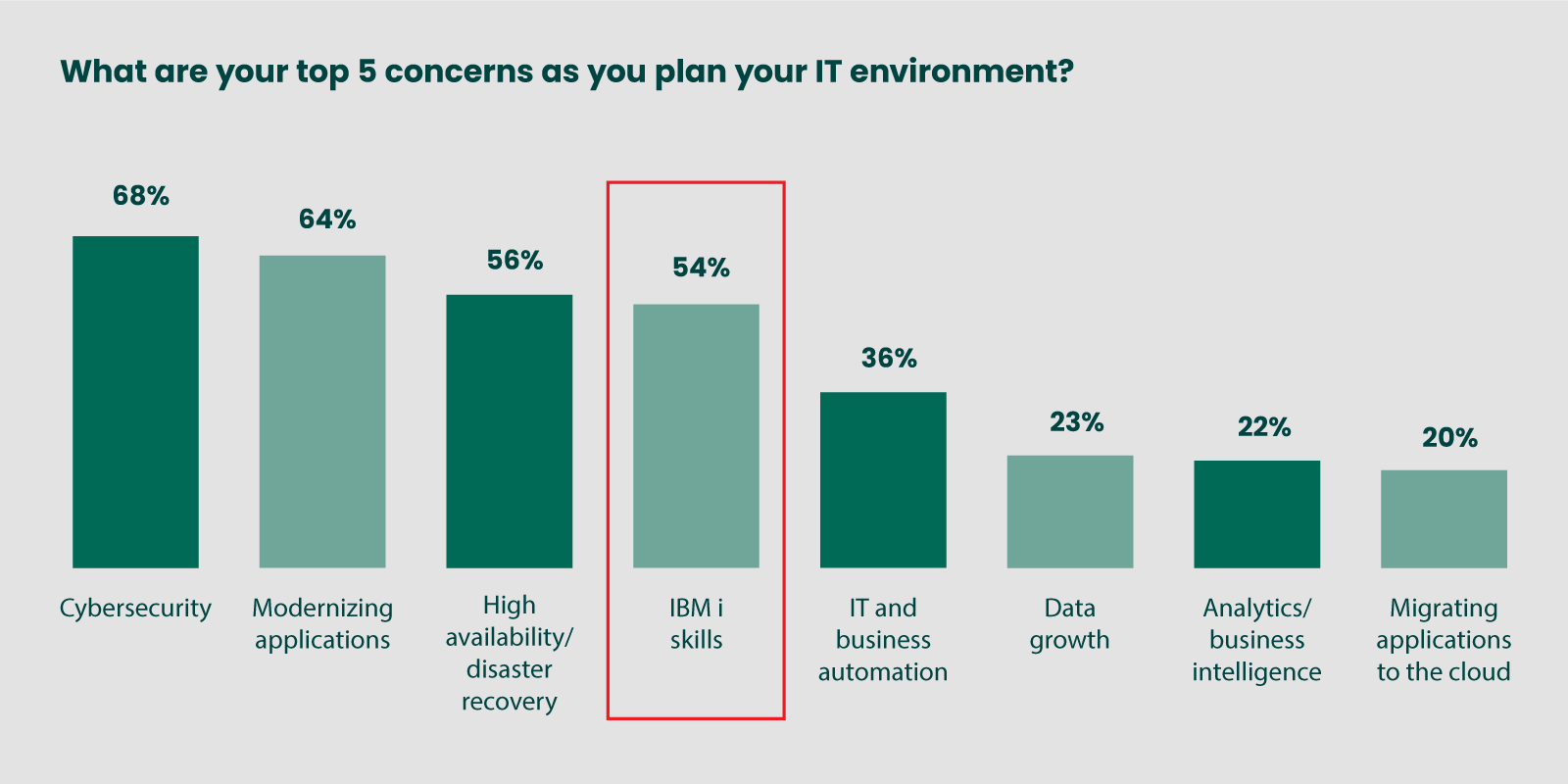
Figure 1
95% of organizations believe their IBM i server gives them a better ROI than other servers (Figure 2) – which would explain why 20% of organizations plan to increase their IBM i footprint despite the concern over IBM i skills depletion. So how are organizations filling this gap? Many are using the cloud to offload some of those responsibilities that were previously managed in-house. Instead of managing the entire workload associated with owning and operating IBM i, organizations are passing off things like PTF work and hardware maintenance so that internal teams can focus their efforts on other matters, such as modernization and business logic.
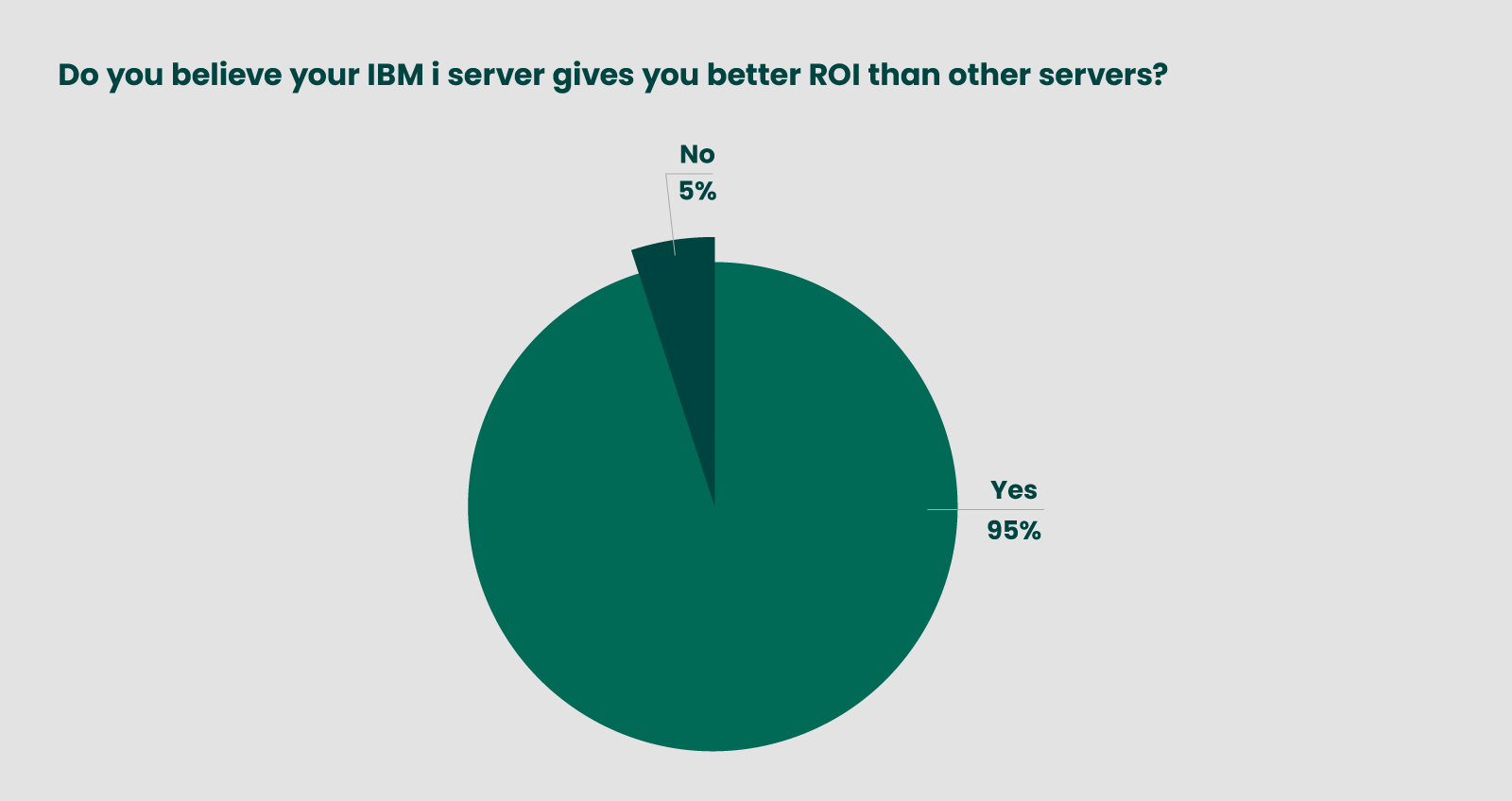
Figure 2
IBM i as a Premier Cloud Platform
When most people think about operating systems that are best suited for the cloud, they’ll typically think of Windows, Linux, or Unix. What many don’t realize is that the IBM i is a great fit for the cloud.
This is thanks to the “scale up” nature of the IBM i. What this means is you can have a large business application running in one VM as opposed to the “scale out” nature of Windows or Unix that would be spread out across multiples servers and environments.
Because of the IBM i’s scale up nature and its ability to centralize its data, one virtual machine (VM) can host people from anywhere in the world – essentially allowing business applications to operate as their own private cloud. If you were to move your applications to a cloud-based infrastructure, your transition and operation would run smoothly due to the similarities they share with actual cloud-based applications.
Getting Out of the Data Center Business
The data center has been at the core of organizations’ IT infrastructure for quite some time now. Whether yours fits in a closet or a warehouse, on-prem data centers and the servers they’re composed of are seemingly on the way out. Currently, 80% of organizations surveyed plan to run their IBM i workloads on-prem. However, we continue to see a steady increase in organizations getting out of the data center business completely by operating their IBM i in the cloud exclusively.
So, what is the advantage of abandoning the data center for the cloud? The primary advantage is the versatility that the cloud offers. Most public cloud service providers operate on a pay-as-you-go basis, meaning customers are not locked into a long-term contract and have a significantly smaller upfront cost than a data center. This way, organizations avoid overspending on their infrastructure while having the ability to quickly scale up when needed. Additionally, cloud service customers are generally not responsible for the capital costs associated with the maintenance and purchasing of materials that come with expanding storage and workload.
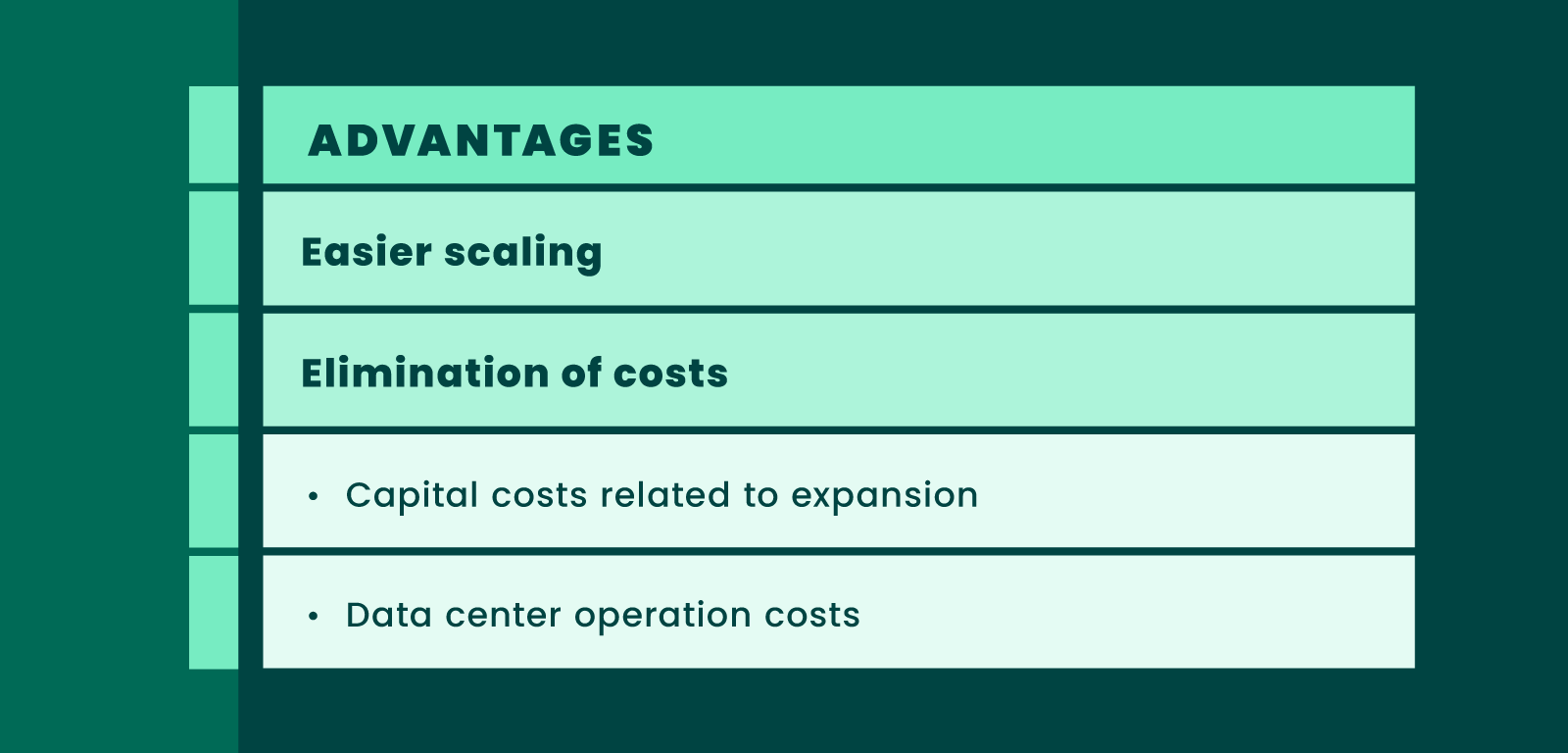
Another benefit is that by eliminating the data center, you no longer incur the myriad of costs that go into operating it. These include equipment, heating, electrical, and the onsite administrator. This may not seem like a significant sum initially, but in perpetuity, eliminating these costs yields a massive amount of savings and eliminates headaches.
There are also some drawbacks to consider when moving away from an on-prem data center. The primary issue being a loss of control. By operating your IBM i through a third party, you maintain less control over day-to-day maintenance and the hardware that is used. If you have strong feelings about being able to see your hardware and perform maintenance on it yourself, then this is an especially important consideration.
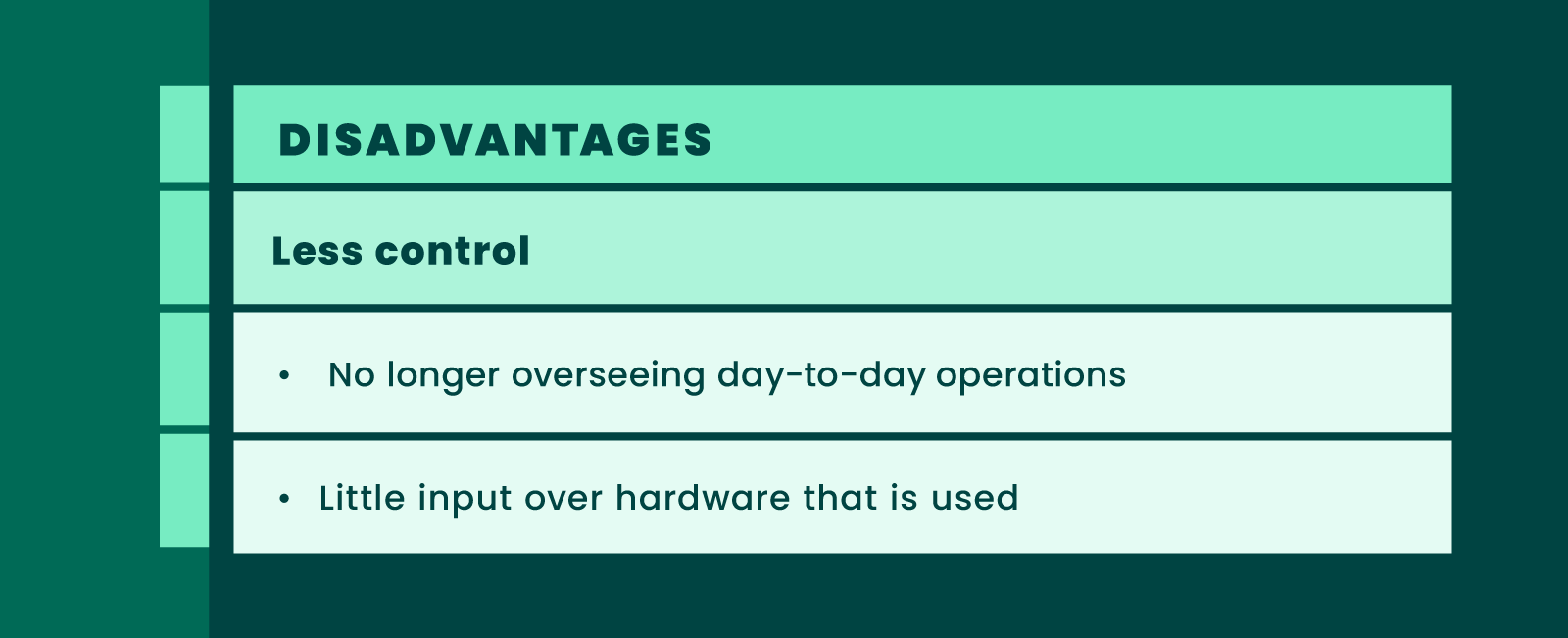
The Cloud Is Cheaper
The biggest misconception among IBM i organizations considering moving to the cloud is that it is a cheaper alternative to a hardware upgrade. Organizations typically replace their Power systems every three to five years with a new lease or a new purchase. With Power8 going out of normal standard support in April of 2024, many are asking themselves the question “Do I go to the cloud or do I buy Power 10?” This is the wrong way to look at cloud versus on-prem pricing.
If you think that you are going to go to the cloud and save money by replacing your Power8 with a cloud solution, you are mistaken. If you’re only considering the price of using a cloud service versus the cost of Power 10, you will not save money. Moving your IBM i to the cloud is a major business decision and needs to be assessed from a long-term perspective.
Only when you consider the total cost of owning the IBM i in the long-run – including physical space, labor, admin costs, and utilities – can this move be considered financially favorable. By moving to the cloud completely, you eliminate the need for a data center and the costs associated with it. Also, you won’t have to worry about additional IBM Power upgrades. Another important note is that the cloud provider is going to offer a more physically secure and disaster proof infrastructure.
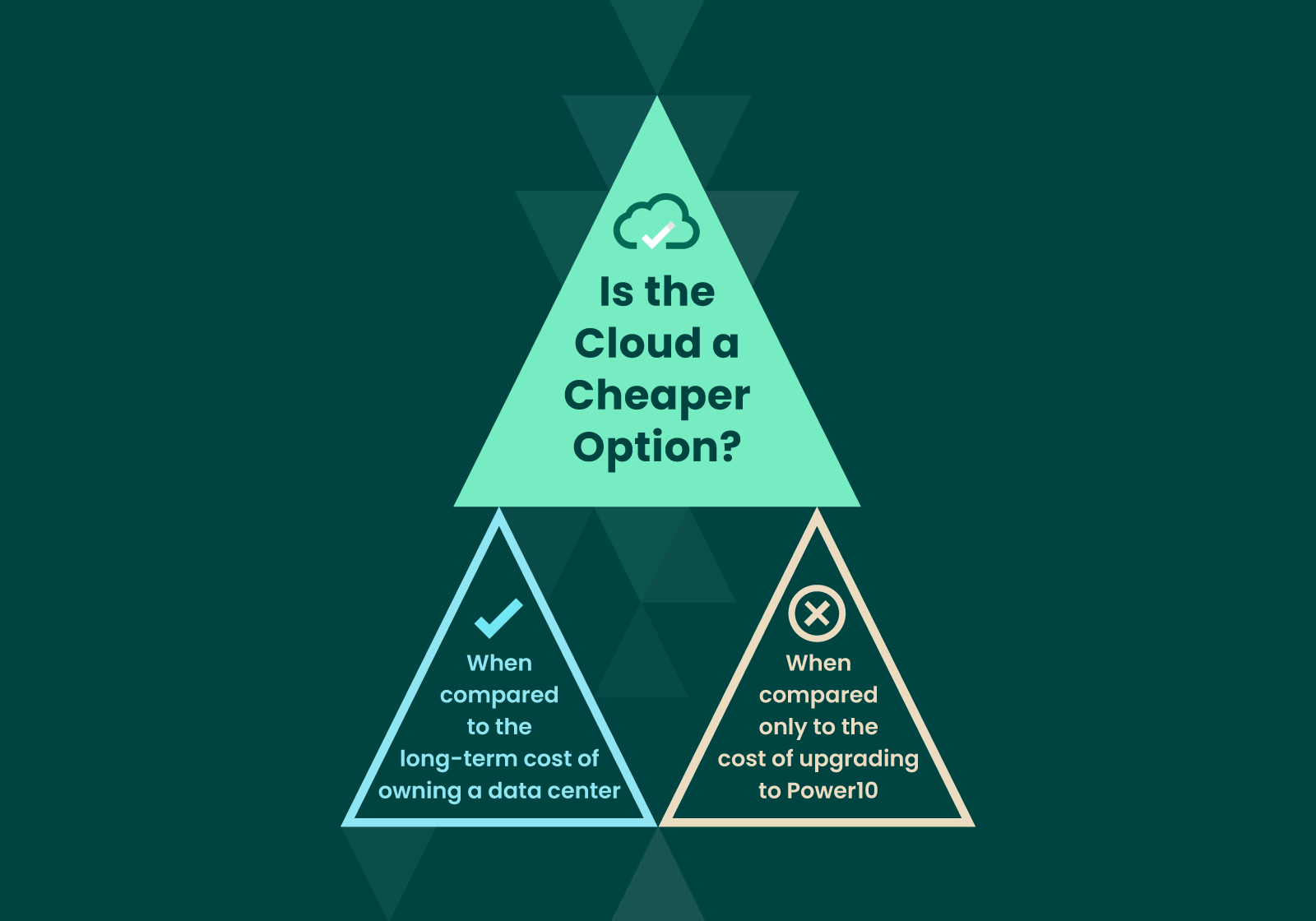
Items to Consider Before Moving Your IBM i to the Cloud
Testing Your Digital Footprint
It is essential to understand that there could possibly be a number of technologies that you’ve been running on-prem that will operate differently or not at all in the cloud. The cloud is an entirely different setting, and you will have to make adjustments to your digital footprint if you want your IBM i to continue running the same way.
For instance, backups are carried out differently. Many IBM i organizations that use physical tape backups. In the cloud, you won’t have that option since your data is not on-prem. Even the ability to perform virtual tape library backups will depend on the infrastructure offered by each cloud provider.
Another difference is in the kinds of storage that you can use. Some of the IBM storage facilities that you may be used to on-prem don’t exist in the cloud because they’re not using IBM Storage. So, things like Flash Copy – a technology for external storage – may or may not be able to be executed in the cloud. The point is, the cloud and the traditional data center are not apples to apples – and you will need to ask questions and test your digital footprint prior to moving to the cloud.
If you’re considering making the move to the cloud and want to better understand your digital footprint, Fortra’s Performance Navigator tool can be used to discover your IBM i characteristics for whatever cloud-exclusive or hybrid environment you’re planning. Fortra’s Robot HA is a high availability solution that assists in creating a smooth and secure transition to the cloud by streamlining business continuity between your organization and its infrastructure.
Does Making the Switch Violate Any Regulations for My Organization?
Another important consideration is whether or not there are any laws or regulations in place that would prohibit your organization from hosting your IBM i in the cloud. These laws and regulations will vary widely depending on where your organization is located and what industry you operate in.
Certain countries require a copy of your data to be present in-country and replicated. In these cases, you can replicate that data outside the country, but you will not be able to store your data in the cloud without performing this extra step. There is an extreme variety of rules that each country abides by regarding where residents’ data is stored, the use of public cloud versus private cloud, and so on that you will need to be aware of.
Just like countries, certain industries are more stringent than others. If you are a defense contractor or government agency, your move to a specific data center could be prevented by the security level assigned to it. The banking industry is also stringent, with a number of regulations put in place to ensure the security and location of its valuable personal and financial information.
All in all, every organization’s bid for a cloud-hosted IBM i is going to be affected differently by the laws and regulations it must abide by – making thorough research a key component of this stage in evaluating your fit for the cloud.
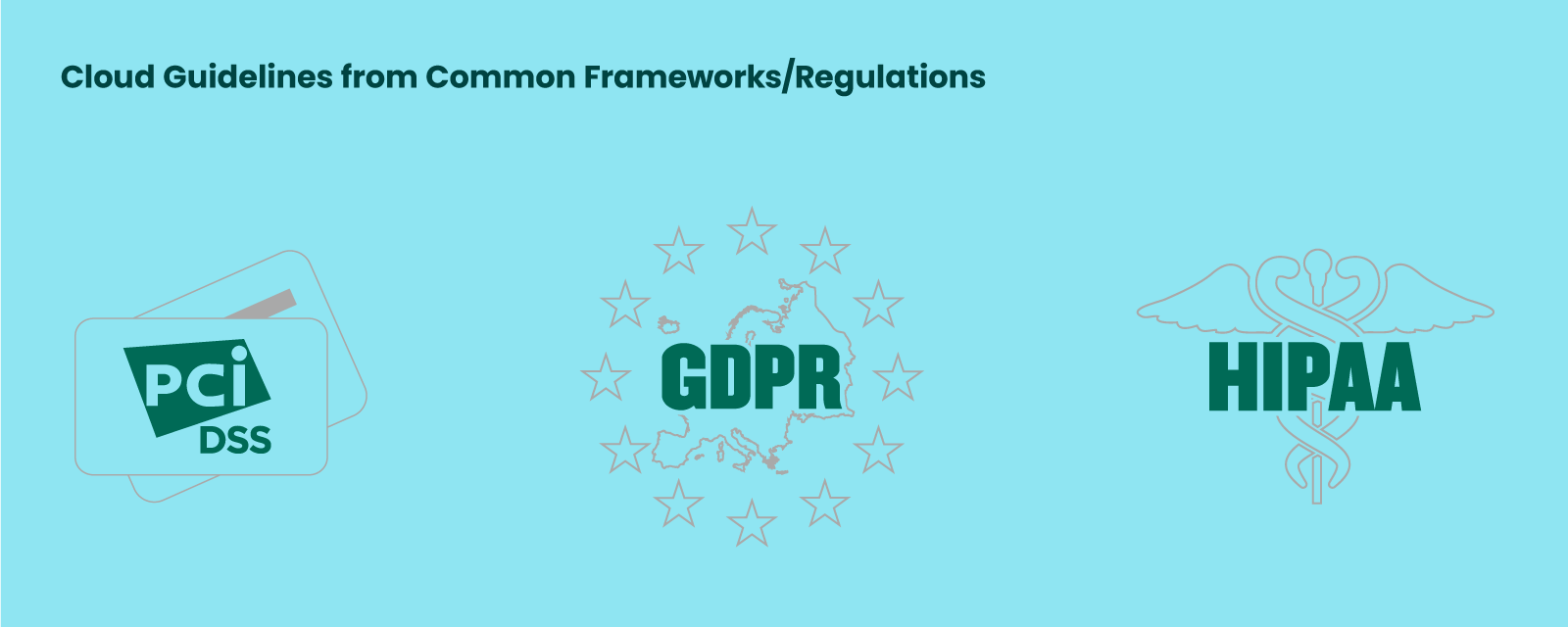
How Will You Automate, Monitor, and Secure the Platform
One common misconception about the cloud is that once you’ve migrated your IBM i, you’re no longer responsible for automating, monitoring, or even securing the platform.
The truth is, you are responsible for making sure these functions are performed, however, it doesn’t have to be your organization that performs them. Many cloud service providers will automate, monitor, and secure your IBM i – but you will have to pay them for these services on top of hosting your data and applications.
It is important in the relationship between customer and cloud provider to clearly understand who is responsible for what. Everything needs to be spelled out – from backups to security – so that no critical IT functions are left out in the process.
It is also important to consider what kind of tools the cloud provider is using and what your preferences are when making these decisions. Are they using tools that are open source and not necessarily fine-tuned for the IBM i? If so, you might be better off keeping these responsibilities within your organization.
Public Versus Private Cloud
Cloud providers can be divided into two categories: public and private. Their quality of fit for your organization primarily depends on how much control you will want to retain over your infrastructure.
With private cloud providers, the customer has much more control over things like backups or what kind of technologies they’re going to use. Private cloud providers will work with you to make sure they’re tailoring their services to your preferences. They might have their recommended virtual tape library partner or their HA partner, but for the most part private cloud infrastructure is customizable and can adhere to specialty regulations.
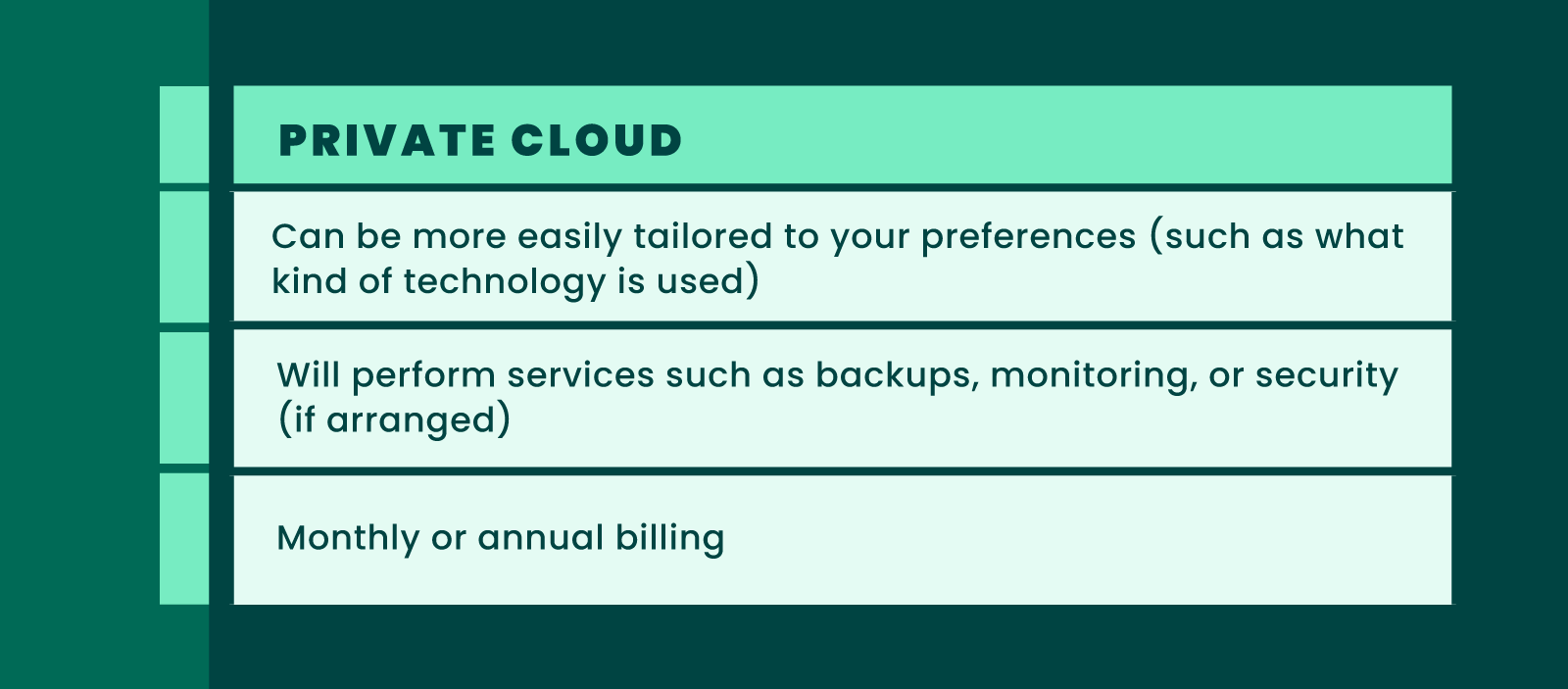
Public cloud operates as a platform as a service (PaaS). This means they’re providing you with a bare metal hardware and operating system – and then you are responsible for everything else. With public cloud, either your own IT team will have to be responsible for backups, monitoring, security, etc. or you can work with a managed service provider. One advantage of the public cloud is that it offers more flexibility. Public cloud providers can easily relocate your infrastructure, partition, or VM while making scaling up or down much easier. They also bill based on hourly usage where private cloud will usually bill monthly or annually.
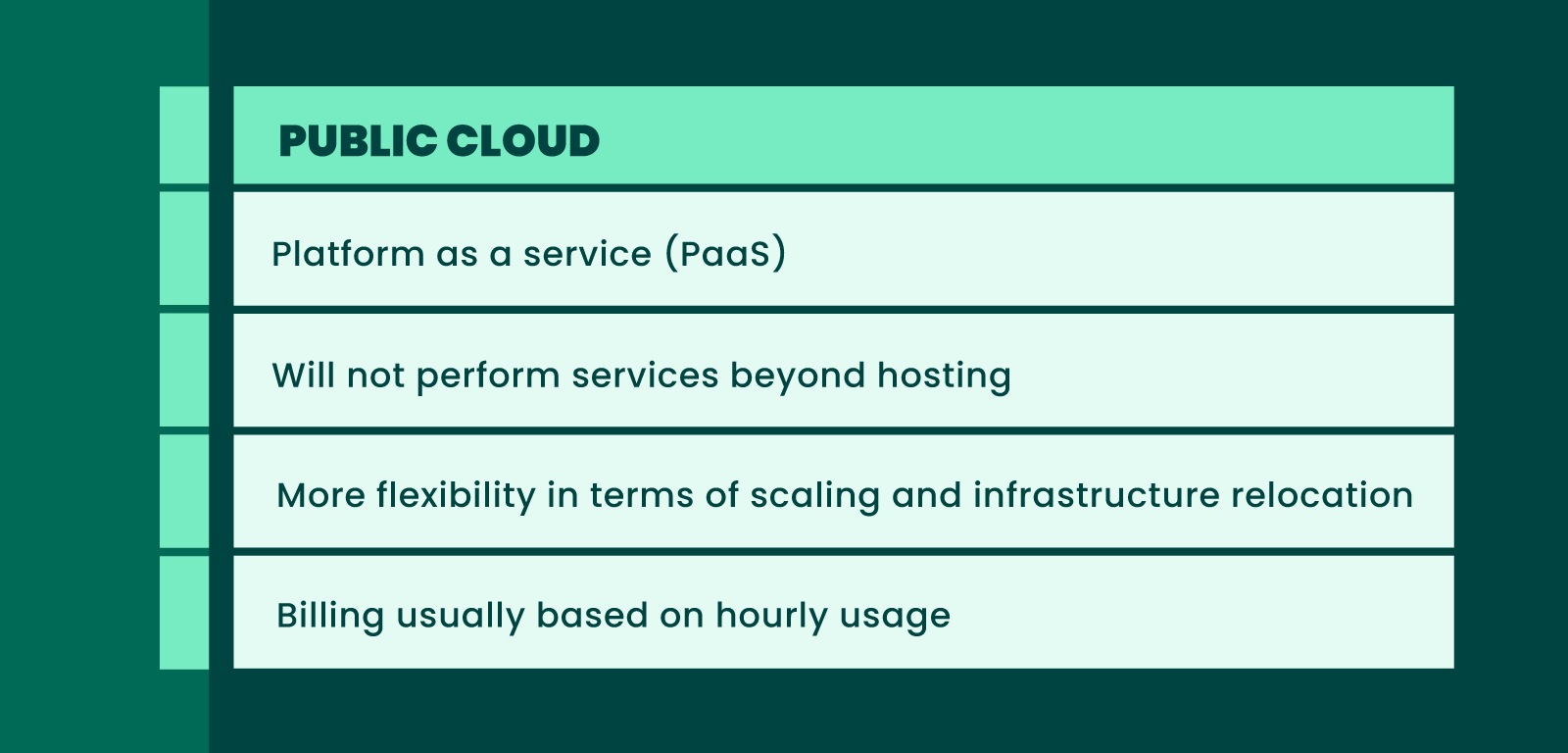
In making this determination between public and private cloud, the question is: What does your organization really need? Do you want to get out of the data center business but still want some of the uniqueness that you’ve had in the data center? Then private cloud is the better option for you. If you aren’t as concerned about the specifics of your infrastructure, then going to public cloud is a better option because it’s more flexible and includes day-to-day computer resource metering.
What About the Windows/Linux Servers that Derive Data from IBM i?
One issue that could arise with moving your IBM i to the cloud is that parts of your IBM i applications may be running on Windows or Linux servers. And when these servers are not located within the same infrastructure, then from an access standpoint, you could experience some network latency.
Generally, the degree of latency is insignificant. However, there’s no sense in moving your IBM i to the cloud, taking this risk, and then finding out that your business application won’t perform. That’s why it’s so important to test how your applications would perform in the cloud prior to making the switch. Most private cloud providers can even move your Windows, Linux, and IBM i to the same racks.
Is the Cloud Right for My Organization?
The uptick in migrations to the cloud would suggest that nearly half of IBM i shops could have some or all of their IT infrastructure hosted in the cloud within the next few years. However, there will surely be plenty of organizations that elect to keep their IBM i entirely on-prem. The decision will be different for every organization, but it will always boil down to determining the quality of fit over the long run.
In determining this fit, the most important factors are:
- Lack of on-premise administration skills
- Whether you are comfortable moving away from the data center
- If the cloud will meet your financial expectations
- Feasibility based on regulations and compliance standards
- If you are comfortable with making changes to your digital footprint
The bottom line is: This is a decision-making process that requires a great deal of research as well as testing – but more often than not – the cloud serves as an efficient, reliable, and effective host for organizations that choose to utilize it.
Are Your Ready to Make the Move? Fortra Can Help
Consult with our experts and we will help you determine whether a move to the cloud could be beneficial for your organization. Should you decide that you would like to operate a hybrid or cloud-exclusive environment, our IBM i solutions and cloud services can assist your organization in migrating correctly, operating more efficiently, and securing your cloud-hosted IBM i.
Customers are fully supported by our experts from start to finish. At installation, our team configures our solutions according to each customer’s unique needs. From then on, customers receive ongoing assistance from our experts. Our tools can plan, secure, automate, and expedite your migration to the cloud.